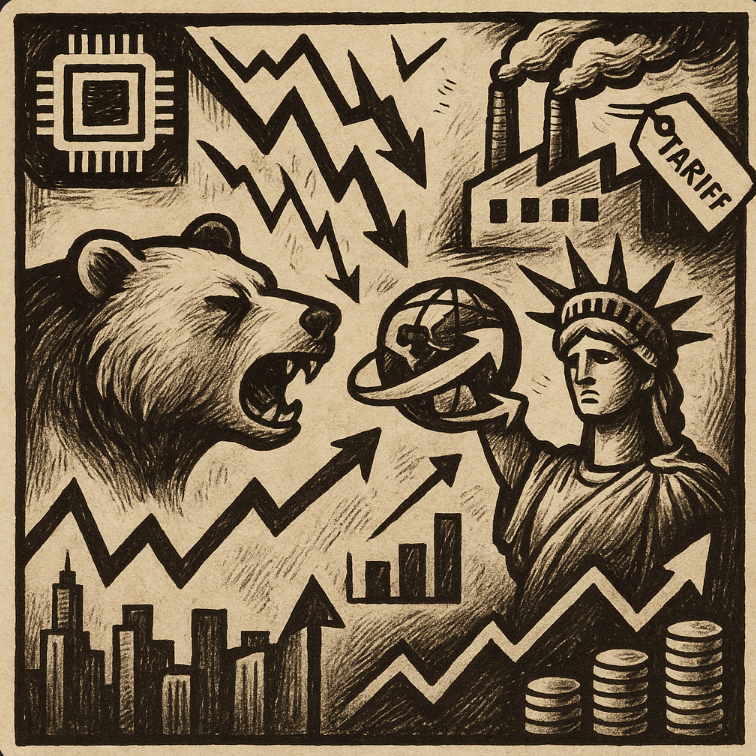🔥 The Big Bullet
Tariff Revival Meets Stagflation Whispers
What happened: Washington has rolled out aggressive new tariffs targeting items like pharmaceuticals from India and semiconductors from Europe, with rates potentially reaching 250%. This announcement rattled markets, leading to declines across major stock indexes. Adding to the unease, the
ISM Services Index
(a key gauge from the Institute for Supply Management that measures activity in the non-manufacturing sector, like retail, healthcare, and finance) came in at a weak 50.1. Readings above 50 signal expansion, but this barely qualifies, highlighting shrinking employment and sharply rising input costs for businesses—a sign of underlying economic strain. On a positive note, tech firm Palantir reported solid earnings and hinted at a massive $10 billion defense contract, offering some relief for AI and defense investors amid the broader sell-off. →
WSJ
Why it
matters: Tariffs like these aren't mere political posturing; they represent a deliberate shift toward U.S.-centric industrial policies, prioritizing domestic production over cost-efficient global trade. However, this comes at a cost: tariffs drive up prices for imported goods, which can filter through to consumers and businesses, fueling inflation. When combined with a sluggish service sector—as shown by the ISM's tepid reading, where job cuts and higher costs suggest weakening demand and profitability—it raises the specter of stagflation. Stagflation is an economic nightmare: a toxic blend of stagnant growth (little to no GDP expansion), persistent high inflation (rising prices eroding purchasing power), and often elevated unemployment. It's particularly tricky because standard tools like interest rate cuts might ease growth but worsen inflation. If tariffs exacerbate supply chain disruptions and cost pressures while the economy slows, the Fed's recent efforts to gently lower rates could lose effectiveness, shaking investor confidence and potentially leading to a harder landing.
What’s
next: Monitor bond yields as a barometer for market anxiety—a flattening yield curve could indicate investors bracing for recession amid trade tensions and soft ISM data. Sectors like tech and defense (e.g., Palantir) may shine in the short term due to their resilience, but cyclical industries and small caps could suffer from higher costs and reduced global demand. The Fed's upcoming communications will be pivotal, but persistent inflation driven by tariffs might constrain their room to maneuver. Focus on assets with defensive qualities, such as firms with robust pricing power that can pass on costs without losing market share.
|



